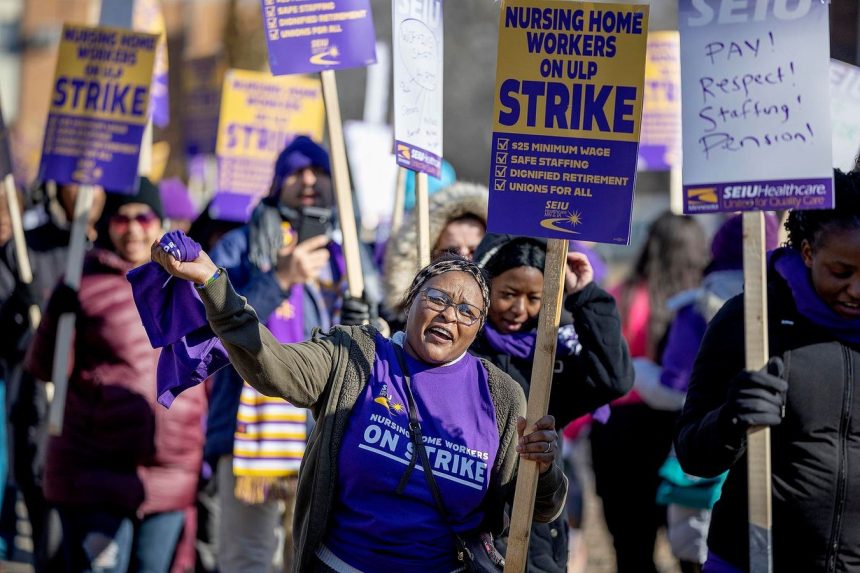With great fanfare, the Biden Administration recently announced new regulations aimed at increasing staffing at nursing homes and boosting pay for some home care workers. The laudable intention: To improve care for frail older adults and younger people with disabilities. But don’t expect changes anytime soon. It will be years before either of these rules are fully implemented.
The new nursing home rule requires facilities to have sufficient staff to provide an average of least 3.48 hours of daily care for each resident. Separately, home care agencies will have to dedicate 80 percent of their Medicaid payments to staff compensation.
The Fine Print
The fine print in the nursing home rule appears to acknowledge the nationwide staffing shortage that affects not only nursing homes, but hospitals, home care and home health agencies, assisted living facilities, and physician offices.
The regulations approved by the Centers on Medicare and Medicaid Services (CMS) require nursing homes to have sufficient nurses and aides to provide a combined minimum of 3.48 hours of daily care per resident. At least 0.55 hours must be provided by an Registered Nurse and 2.45 hours by an aide. The remaining 0.48 hours of care come from any mix of RNs, licensed practical nurses, licensed vocational nurses, or aides. In addition, nursing homes must have an RN on site 24/7.
The research organization KFF estimates that only about one-in-five nursing facilities could fully meet the new standards. As a result, CMS is phasing in the new rules over several years.
To start, facilities will have three months to complete a staffing assessment that takes into account the interests of employees and residents.
Then, facilities generally will have two years to meet the new combined 3.48 hour standard for nurses and aides. Registered nurses will have to be on site 24/7 within that two-year window. Rural facilities that face especially difficult staffing challenges get three years to achieve those goals.
Facilities generally will be given one more year, until 2027, before they must meet the specific, separate, staff goals for RNs and nursing assistants. Rural facilities will get an additional two years, for a total of five years, before they must meet all standards. That would be in May, 2029.
In addition, facilities may apply for waivers from the 24/7 RN rule or request temporary exemptions if they are unable to comply with other new requirements because of a shortage of available care workers in their communities.
In effect, even the initial staffing requirements will not begin to kick in until after Biden’s first term ends. Donald Trump has not said whether he’d repeal the rules if he is elected in November, but it would not be surprising.
Solutions To Shortages
Some solutions to staffing shortages, such as raising wages and improving working conditions, are in the hands of facility operators themselves. Some can afford wage and benefit hikes while others can’t.
But other constraints, such as strict immigration laws, shortages of nursing teachers, and a growing reluctance of workers to take on increasingly dangerous direct care work, are largely out of the control of facilities.
The Administration is taking several steps to help nursing facilities recruit staff. Last September, it committed $75 million to encourage nurses to work in nursing facilities. One program will offer tuition reimbursement to nurses who agree to work in a qualifying nursing home or state inspection agency. It also will encourage states to provide financial incentives for people to become nurses.
CMS also said it would make it easier for aides to enroll in training programs and get nursing home jobs. It also promised a marketing campaign to encourage people to train as nurses or care workers, and to seek nursing home jobs.
The Home Care Staff Runway
In a separate rule, CMS said it would give states six years to comply with a new requirement that Medicaid home care agencies designate 80 percent of their Medicaid payments to staff compensation. That would delay compliance until 2030. The rule also gives states, which set their own payments and generally enforce Medicaid rules, additional authority to grant waivers and set separate rules for small home care firms.
While states must provide long-term care in nursing homes through Medicaid, they also receive waivers from the federal government to provide supports and services for those living at home. The new rule applies to firms that provide home care for those Medicaid recipients.
Many states have long waiting lists for Medicaid home-based care but it is hard to compare them because reporting is so inconsistent. The new payment rules require states to disclose those waiting lists, as well as wait times for delivery of physician and personal care services.
Biden’s new staffing rules are ambitious but it will be many years before we know if they are successful.
Full disclosure: I serve as an unpaid board member of a non-profit senior living organization that operates nursing facilities.
Read the full article here
















